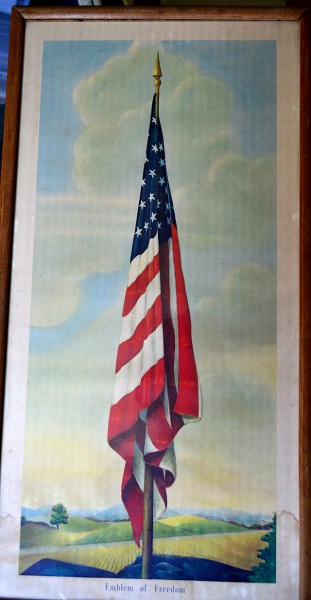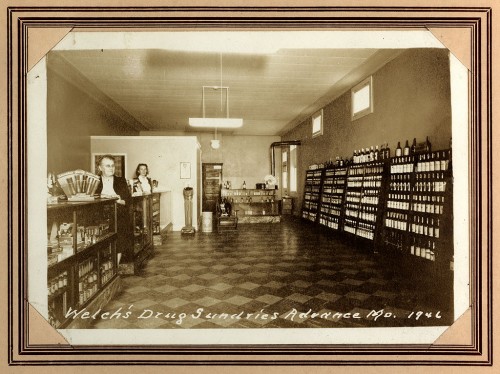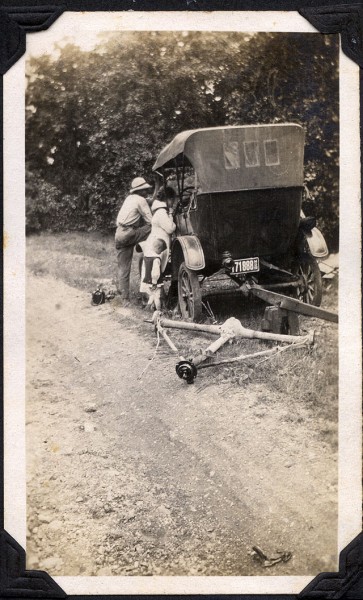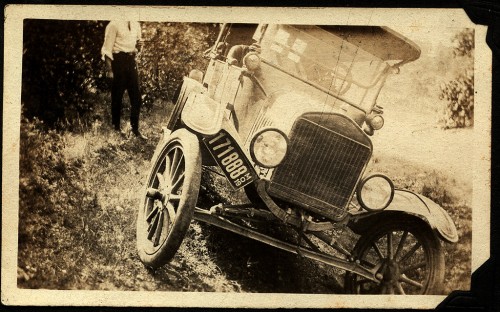When you live in Florida, you forget what changing seasons look like. In fact, you divide the world into two classifications: hot and hotter. Today’s ride from Cullman, Alabama to Cape Girardeau reminded me of how pretty this time of year can be. I ran across the first really striking trees around Huntsville.
By the time I got north of Nashville, the colors were starting to get pretty enough that I decided to risk death by shooting some windshield pictures. Now, before you take me to task for not concentrating on my driving, these aren’t carefully composed photos where I hold the viewfinder up to my eye and wait for just the right composition. I stick the camera up in front of me and hold the button down, glancing at the LCD screen on the back every few frames to see if I’m pointing anywhere close to the right direction. It’s gangbanger-style photos where you spray and pray.
Still a lot of green left
My eye was drawn to the farm coming up on the right, the clouds and the patches of sunlight on the road. I clicked off eight frames. The first one was the best. That’s frequently the case. I might shoot multiple frames of a subject to bracket the exposure or to make sure the picture is sharp, but it’s almost the first shot that has the best composition. That helped form my philosophy of “shoot it when you see it.” The longer you fool around, the better the chance that the magic is going to leak out.
Clouds look menacing
 By the time I got off I-24 at the Cadiz exit, the clouds were beginning to take on an Armageddon appearance. Despite their menacing look, I covered about 350 miles Sunday with just a handful of sprinkles.
By the time I got off I-24 at the Cadiz exit, the clouds were beginning to take on an Armageddon appearance. Despite their menacing look, I covered about 350 miles Sunday with just a handful of sprinkles.
90-degree approach
 I published a photo of the Ohio River bridge at Cairo from the eastbound side last trip. I hit the infamous 90-degree approach to the bridge from the westbound side this time at about dark-thirty.
I published a photo of the Ohio River bridge at Cairo from the eastbound side last trip. I hit the infamous 90-degree approach to the bridge from the westbound side this time at about dark-thirty.
Tuesday Preview Show
Here’s the last plug for my preview show at the Altenburg Museum on Tuesday night at 6:30. I have to cut my presentation down for the formal show later in the month, so I’m looking for folks to tell me what works and what can be jettisoned. I’ll be talking about stories I’ve covered interesting folks I’ve met and what it’s like to have a job where you work a mere 300 seconds a year.
Last leg photo gallery
Here are a few more windshield grab shots from the last leg of my ride to Cape. Click on any photo to make it larger, then click on the left or right side of the image to move through the gallery.











 About 25 years ago, I did a story about Grand Ridge, a small school system in Florida’s Panhandle that was trying a new reading program. I met the Hollister family and grew to really like them. Charles and Annie had two children – Hobie, who was Son Matt’s age, and Heather, who was a year or two older. I made it a point to stop in on them when we passed through on vacation or when I had an assignment in the area.
About 25 years ago, I did a story about Grand Ridge, a small school system in Florida’s Panhandle that was trying a new reading program. I met the Hollister family and grew to really like them. Charles and Annie had two children – Hobie, who was Son Matt’s age, and Heather, who was a year or two older. I made it a point to stop in on them when we passed through on vacation or when I had an assignment in the area.


